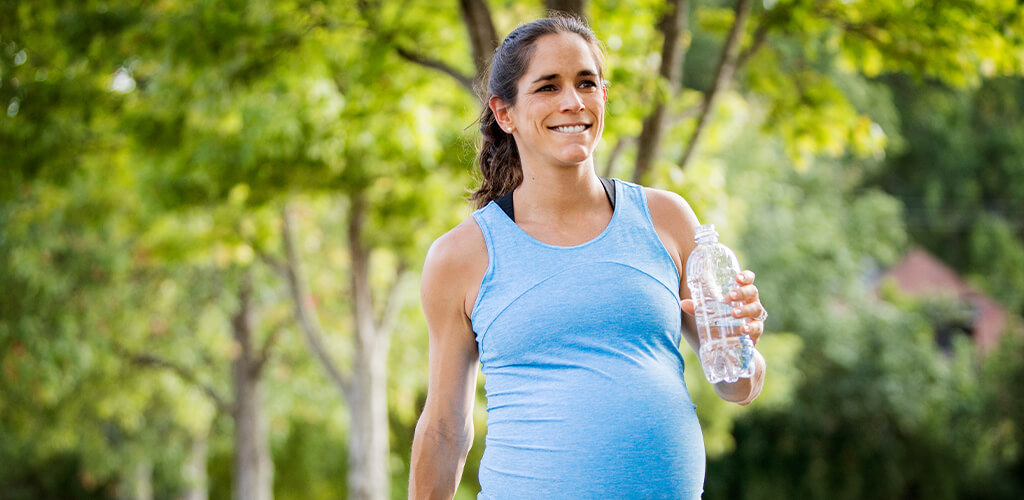Fit Tip: Prenatal Workout

Exercise and pregnancy: our bodies go through changes during pregnancy, so it’s natural our workouts will experience some changes as well. But how and when those changes occur, can often be confusing.
Years ago, women were told to sit down, take it easy, do LESS during pregnancy. Over the years that gradually started to change, and women were told if they were exercising before conceiving they could continue. Eventually exercise was recommended for all expectant mothers, but low impact exercises and walking were encouraged. Now we see social media images of pregnant women running marathons, doing HIIT workouts, and lifting heavy barbells overhead.
The good news is, research over many years has found that for healthy women with uncomplicated pregnancies, exercise has numerous benefits, including reduced risk of gestational diabetes and preeclampsia, higher incidence of vaginal delivery/lower incidence of Caesarean delivery, improved sleep, less back pain, and reduced risk of anxiety or depression. Strengthening our bodies helps prepare women for labor and delivery and can ease and reduce recovery time. More good news: research shows exercise benefits baby as well. Many studies have shown women who engaged in moderate to intense exercise during pregnancy tend to have babies with better development in utero, healthier hearts and brains, reduced risk of chronic health conditions and lower rates of obesity as children and adults.
The American College of Obstetricians and Gynecologists (ACOG) recently released their updated guidelines for Exercise during Pregnancy stating: “Physical activity and exercise in pregnancy are associated with minimal risks and have been shown to benefit most women, although some modification to exercise routines may be necessary because of normal anatomic and physiologic changes and fetal requirements.” (ACOG, 2020).

In other words, the benefits of working during pregnancy far outweigh any potential risks, and exercise is recommended for all women with uncomplicated pregnancies. If you already have a fitness routine, you can usually keep doing most of what you are doing especially in the first trimester. If you are newer to exercise, start slow and seek out specific prenatal workouts (like the one below). Either way, here are a few basic guidelines to help you keep moving that baby bump.
- Use the “talk test” to regulate heart rate and intensity.
We experience respiratory changes during pregnancy as our body pumps more oxygen for both mom and baby. If you are unable to talk during an exercise, you may be going a little too hard and want to reduce your intensity.
- Avoid things that put intra-abdominal pressure on your core.
Once in the second and third trimester, it is generally recommended to avoid things like crunches, sit ups, leg lifts, and anything in the front plank/pushup position to reduce the risk of diastasis recti/abdominal separation. Focus on strengthening your deep core (transverse abdominus) with TA breathing as well as lateral movement.
- Avoid exercises flat on your back for long periods of time in the second and third trimester.
This could compress blood vessels and restrict circulation, causing you to feel dizzy or nauseous. Performing exercises elevated at an incline is a good alternative.
- Avoid contact sports or balance activities.
Listen to your body. No matter your fitness level, growing a baby is strenuous and your body is working overtime. If something doesn’t feel good, don’t do it.
And of course, the most important: Talk to your doctor or midwife and figure out what’s best for you and your specific pregnancy. Not pregnant? Don’t worry this workout is also great for those recovering from and injury or even as a way to ease into working out. Check out the workout below for some safe, effective prenatal exercises.
Prenatal Workout
Do each for 30 seconds then repeat.
- Transverse Abdominal (TA) Breathing
- Squat rotational press
- Side lunge and curl
- Quadruped Row
- Clam Shell
- Side Plank
You may also like
Fit Tip: Working Out With Household Items

